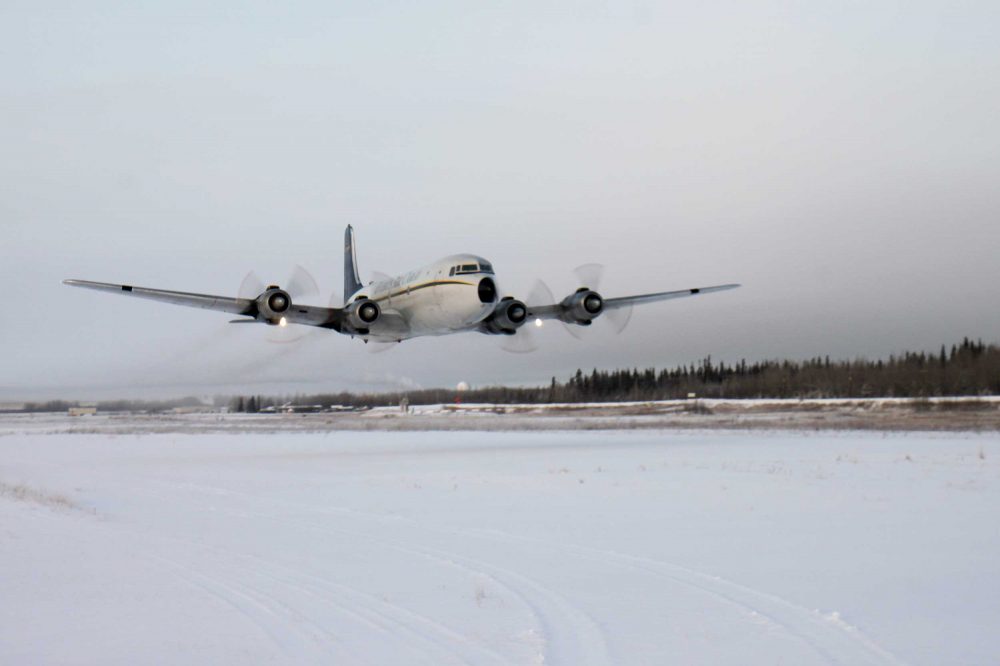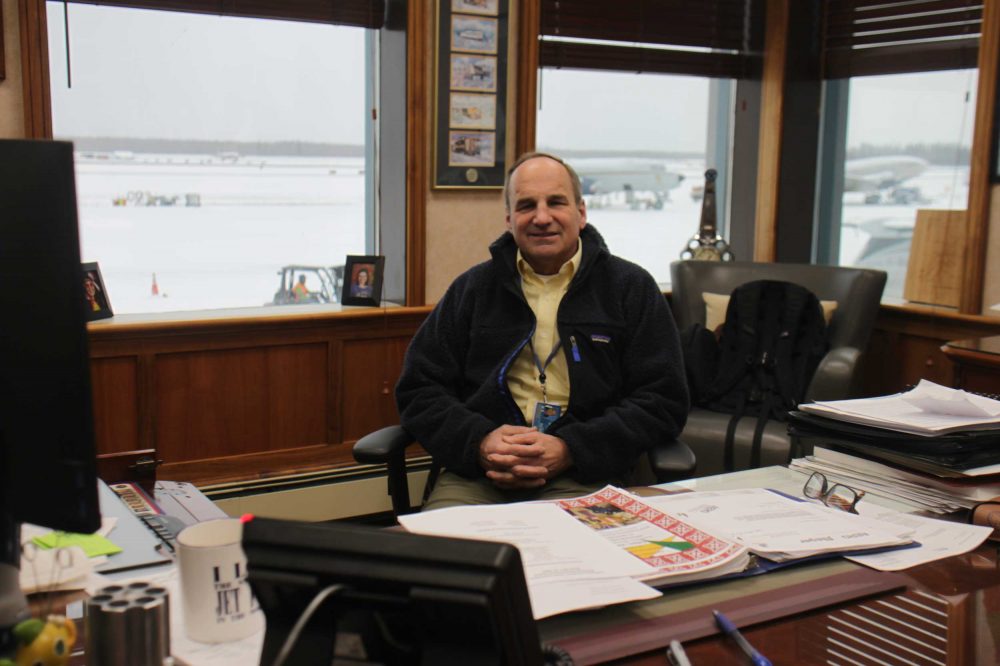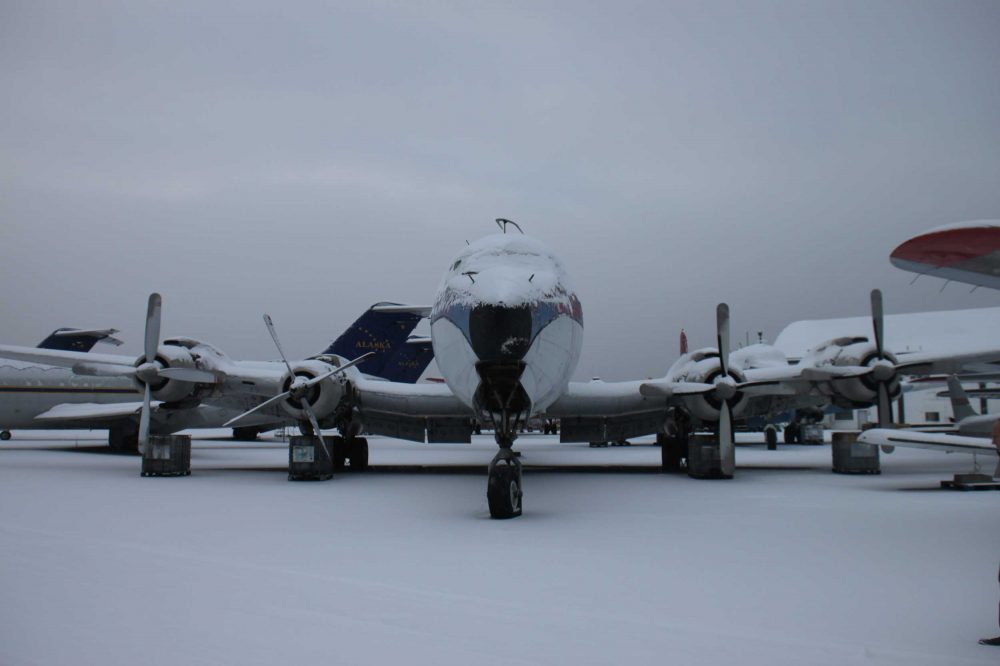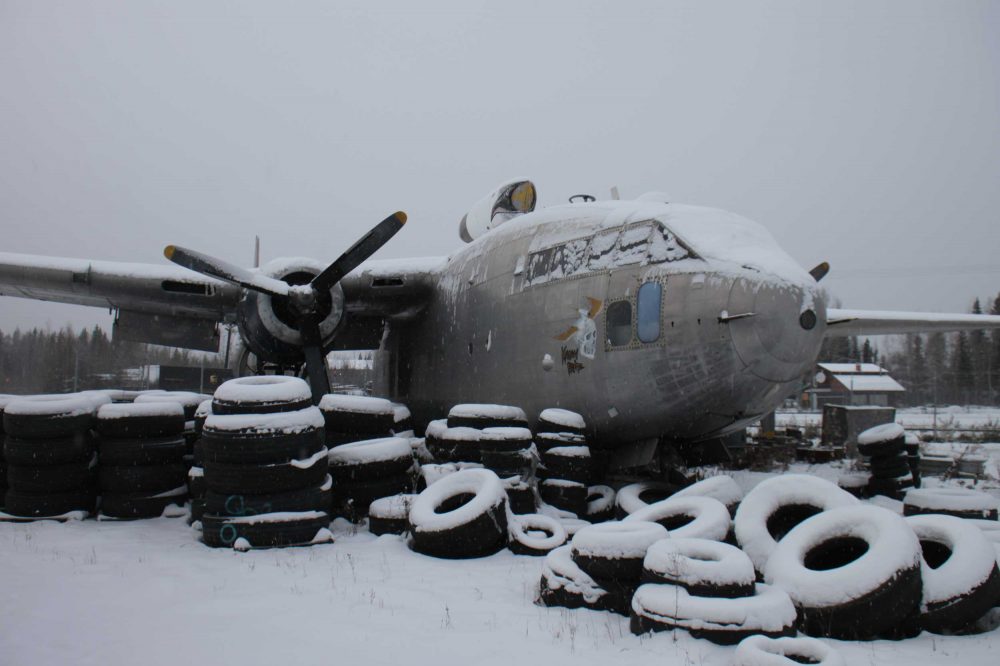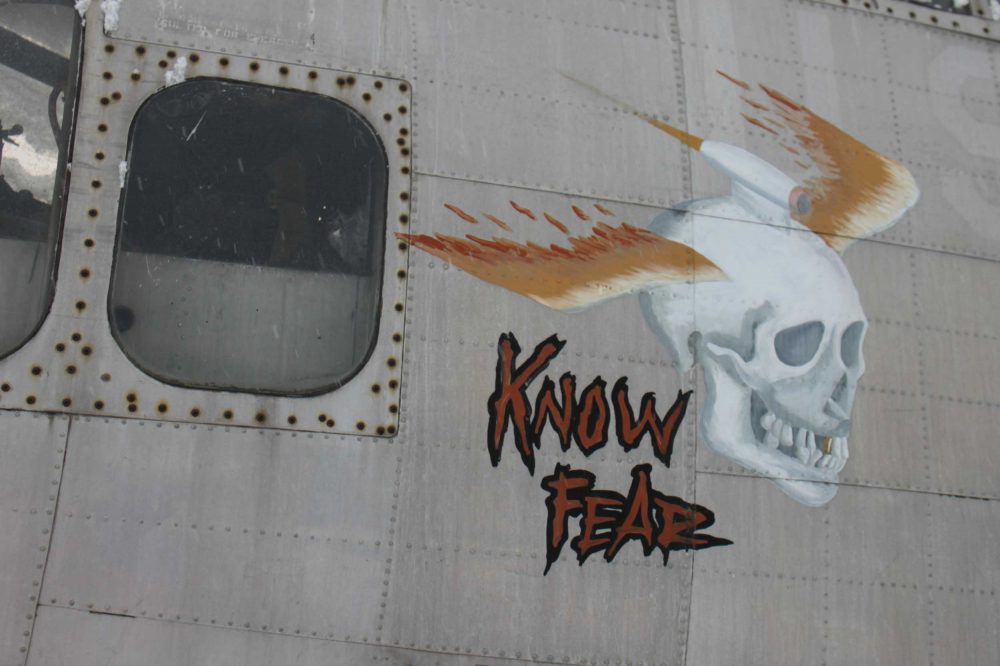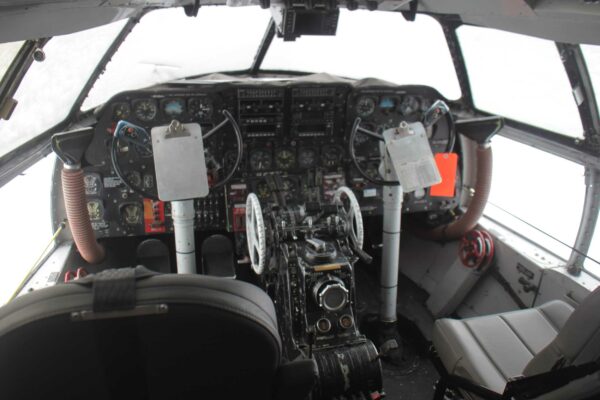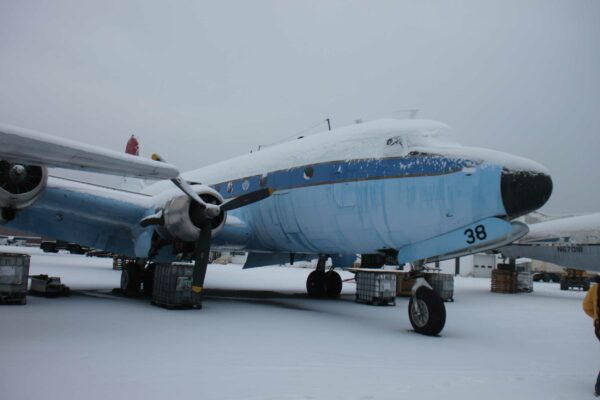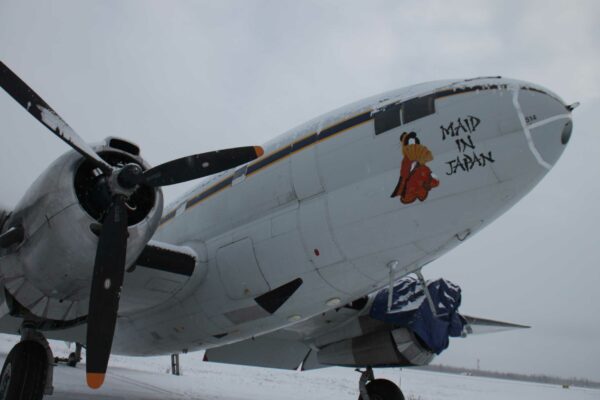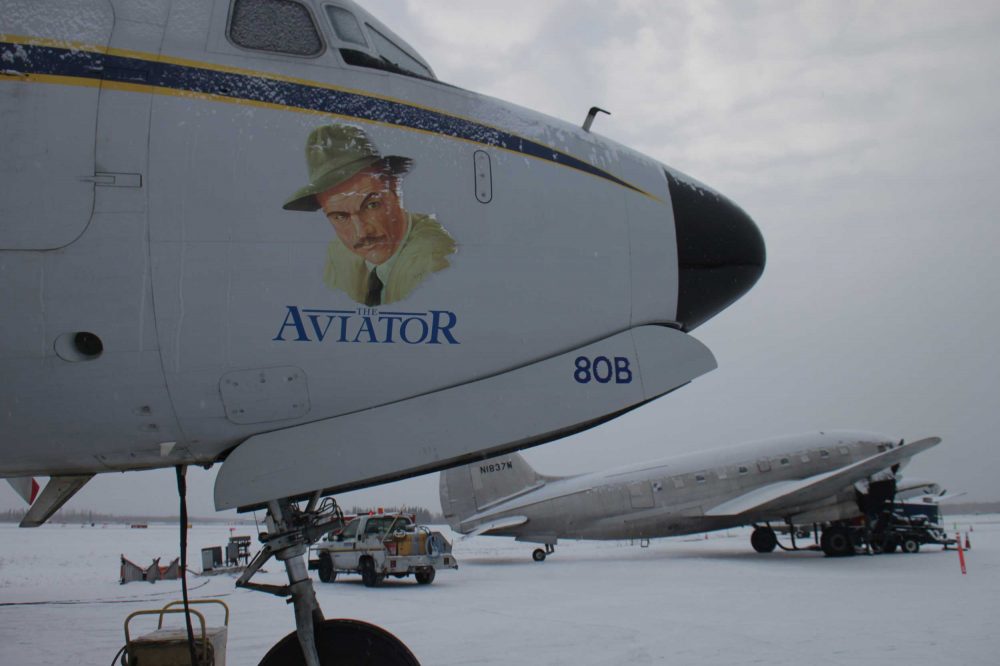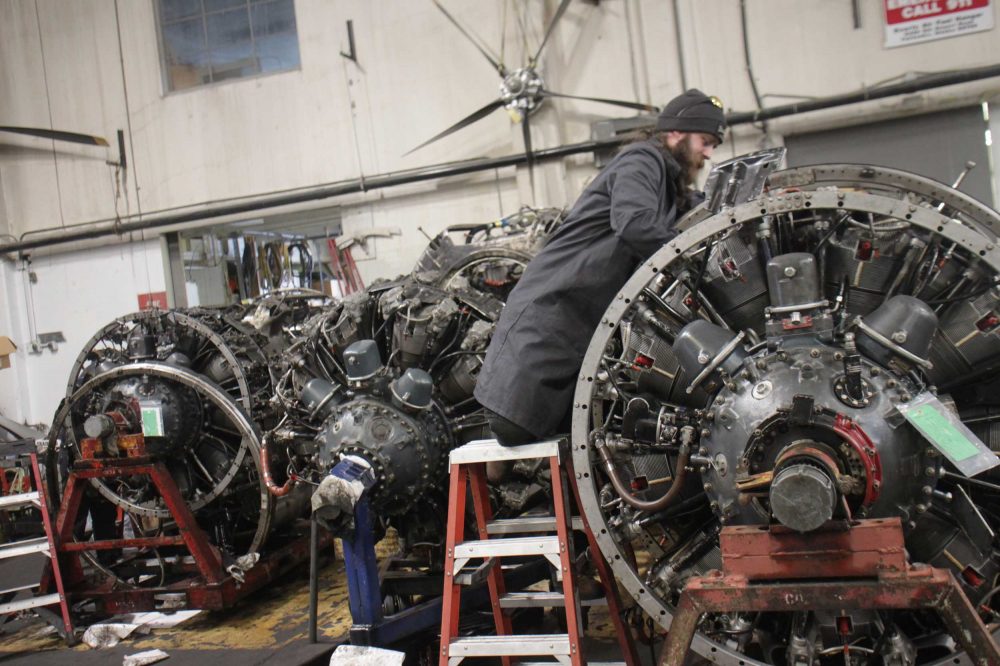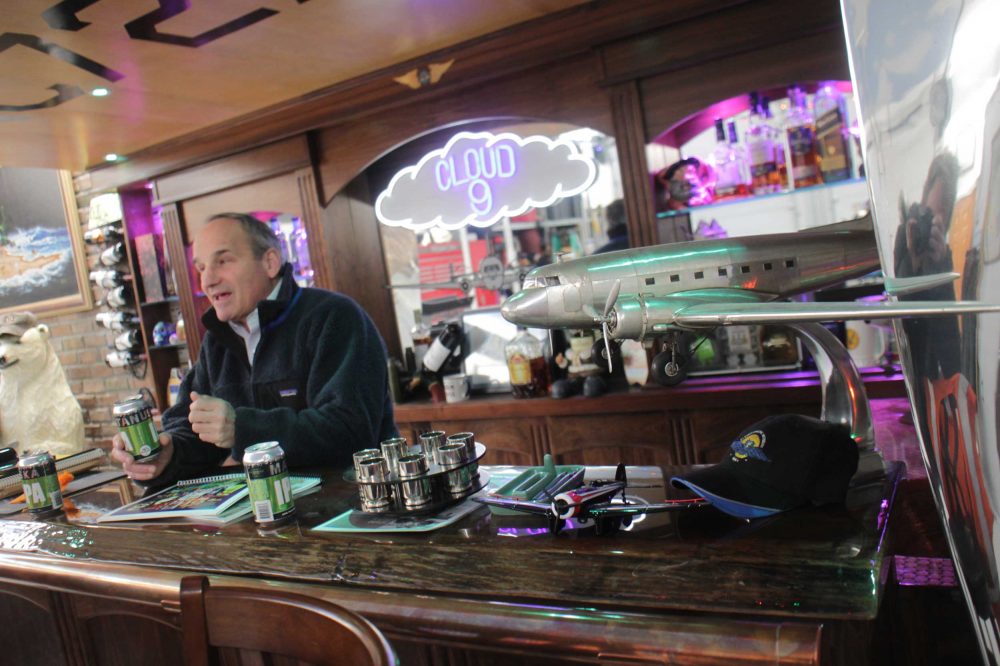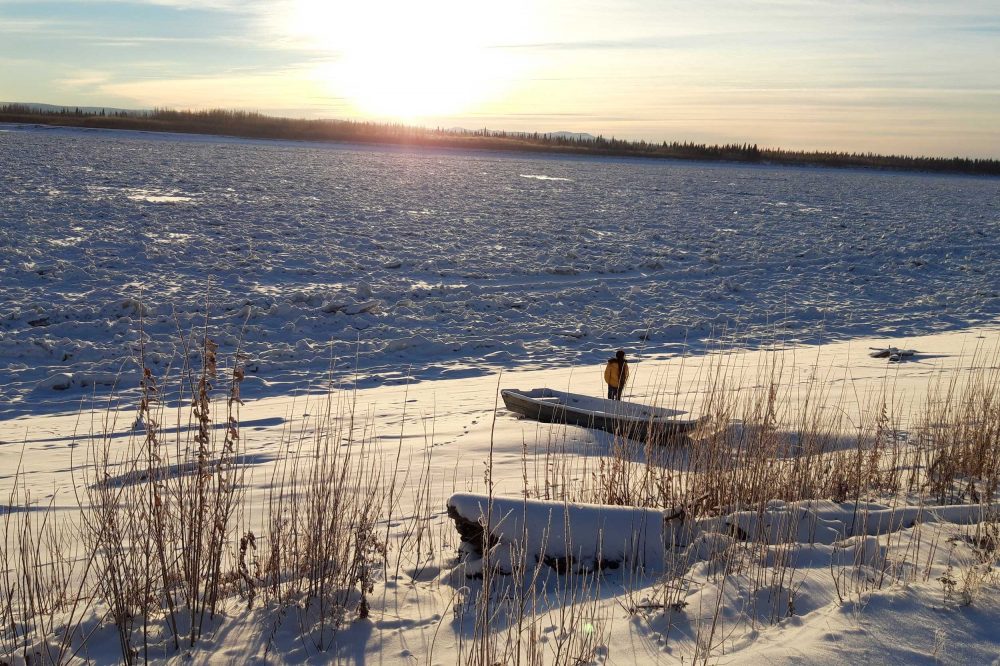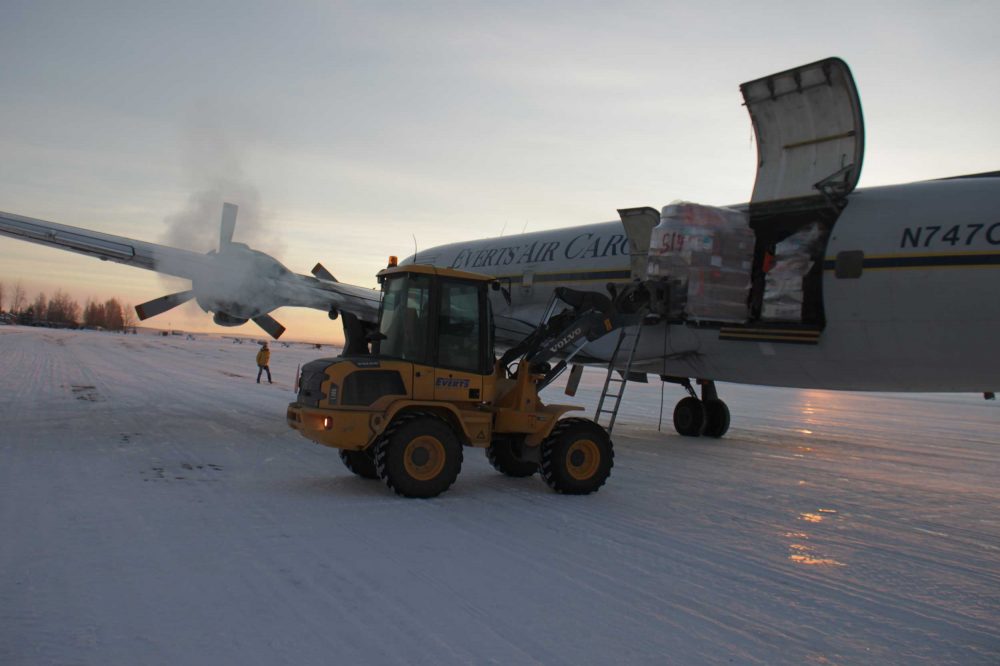I then take a few photos of the unloading, marvel at the amount of oil under the engines and climb into the aeroplane.
And that’s the next mistake. At least, it is if you do it without gloves. The icy metal of the ladder and hull sends a searing pain into my hands.
“Be glad it’s not even colder – you’d be frozen solid by now,” says Rob, laughing, as I hold my immobile fingers between my thighs for warmth, which after a few minutes work again.
It doesn’t take long before the DC-6 is already unloaded, primarily with pallets of food.
“For the local supermarket,” explains Rob. But some of it would be distributed directly to smaller planes and then flown to even smaller towns with even smaller airports.
Unloading, explains Rob, always has to be done as quickly as possible in winter “so that the engines don’t get cold”.
So it doesn’t take long before Captain Everts wants to take off again. I quickly take a picture of the start of the engines and the associated smoke development. “Stand at the end of the runway again. Then you can photograph the start,” Rob had told us.
We get back in the company car and off we go. And this time we didn’t fail. With the landing gear retracted, Rob Everts roars overhead just a few minutes later at a very low altitude.
We take our photos and films and watch the aeroplane and its plume of smoke for a while. Then it’s quiet again.
And now? My brother and I look at each other. The Cessna Caravan that’s supposed to take us back to Fairbanks won’t be here for four hours.
“You can use the car all day – we don’t need it today,” Chris told us.
So, back to the river – except this time we can’t screw anything up.


